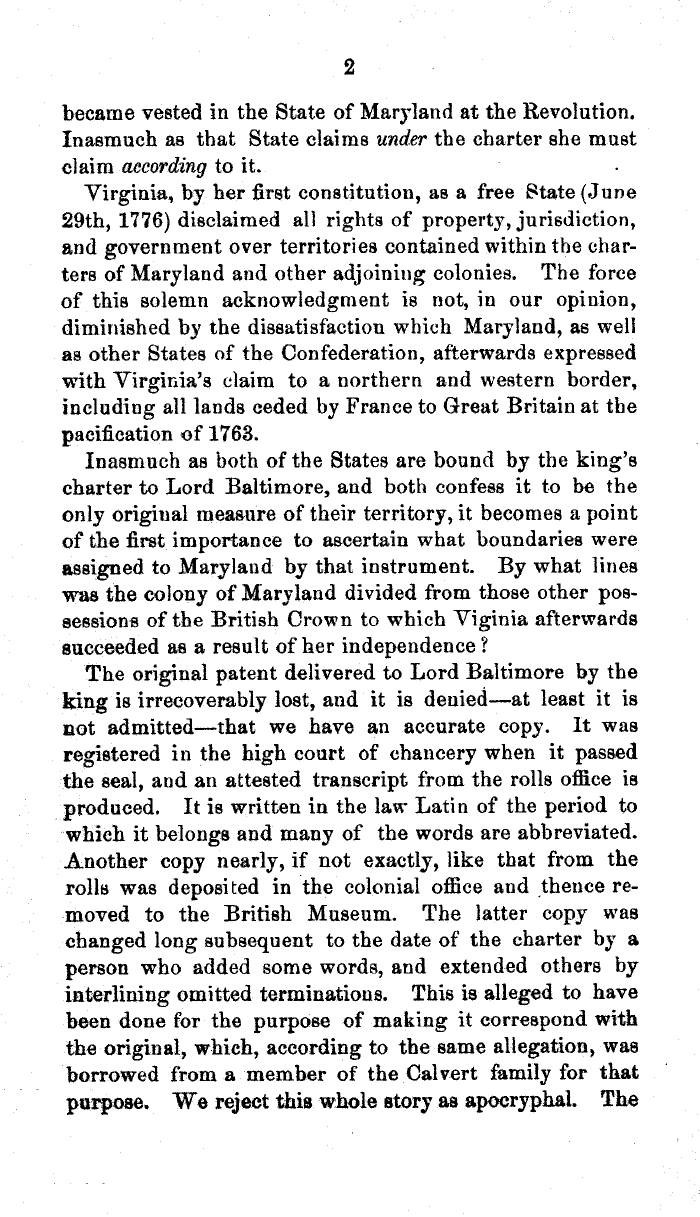| 2
became vested in the State of Maryland at the Revolution.
Inasmuch as that State claims under the charter she must
claim according to it. .
Virginia, by her first constitution, as a free State (.June
29th, 1776) disclaimed all rights of property, jurisdiction,
and government over territories contained within the char-
ters of Maryland and other adjoining colonies. The force
of this solemn acknowledgment is not, in our opinion,
diminished by the dissatisfaction which Maryland, as well
as other States of the Confederation, afterwards expressed
with Virginia's claim to a northern and western border,
including all lands ceded by France to Great Britain at the
pacification of 1763.
Inasmuch as both of the States are bound by the king's
charter to Lord Baltimore, and both confess it to be the
only original measure of their territory, it becomes a point
of the first importance to ascertain what boundaries were
assigned to Maryland by that instrument. By what lines
was the colony of Maryland divided from those other pos-
sessions of the British Crown to which Viginia afterwards
succeeded as a result of her independence
The original patent delivered to Lord Baltimore by the
king is irrecoverably lost, and it is denied-at least it is
not admitted-that we have an accurate copy. It was
registered in the high court of chancery when it passed
the seal, and an attested transcript from the rolls office is
produced. It is written in the law Latin of the period to
which it belongs and many of the words are abbreviated.
Another copy nearly, if not exactly, like that from the
rolls was deposited in the colonial ofce and thence re-
moved to the British Museum. The latter copy was
changed long subsequent to the date of the charter by a
person who added some words, and extended others by
interlining omitted terminations. This is alleged to have
been done for the purpose of making it correspond with
the original, which, according to the same allegation, was
borrowed from a member of the Calvert family for that
purpose. We reject this whole story as apocryphal. The
|

